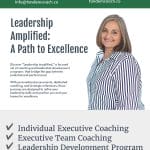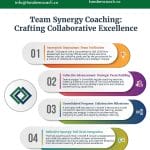Leadership transitions can be challenging for organizations, especially when there’s no clear successor for key positions.
According to a Harvard Business Review study, S&P 1500 companies lose nearly $1 trillion in market value annually due to poorly handled leadership transitions.
This staggering figure underscores the vital importance of leadership development and succession planning.
When effectively combined, these two processes create a powerful strategy for nurturing talent, ensuring organizational continuity, and driving long-term success.
TL;DR – How to Develop Leaders
An effective leadership development and succession planning process involves:
- Identifying critical leadership roles
- Assessing leadership competencies needed for those roles
- Recognizing high-potential employees
- Creating personalized development plans addressing skill gaps
- Providing job rotations, special projects, coaching, and other growth opportunities
- Continuously evaluating progress and readiness
At Tandem Coaching, we offer a 9-month Leadership Development Program for high-potential leaders preparing for director-level roles.
With us, you get a customized plan to improve your leadership abilities based on a 360-degree assessment identifying strengths and areas for growth. The program includes group coaching sessions for peer-based learning.
If you feel your people skills need some sharpening before that next big promotion, check out Tandem’s approach to sustainable leadership growth. Get in touch to learn more.

What is Leadership Succession Planning?
Leadership succession planning refers to the deliberate effort of grooming and preparing qualified employees to step into vital leadership roles as they open up. It focuses on building bench strength so multiple successors are prepared to assume key positions.
However, it goes beyond simply creating a list of potential replacements for top positions. Instead, it’s about building a talent pipeline that ensures the right people with the right skills are in the right places at the right times.
Effective succession planning:
- Reduces risk and disruption during leadership transitions
- Ensures business continuity
- Boosts employee engagement and retention
- Preserves institutional knowledge
- Prepares the organization for future challenges
It lets companies develop and retain internal talent instead of always bringing in outside hires.
When Steve Jobs returned to Apple in 1997, he prioritized succession planning. This foresight allowed for a smooth transition to Tim Cook’s leadership when Jobs stepped down in 2011, maintaining Apple’s innovative edge and market dominance.

How Are Leadership Development and Succession Planning Related?
Leadership development and succession planning are two sides of the same coin. While succession planning focuses on identifying potential future leaders, leadership development is about nurturing and preparing those individuals for larger roles.
Here’s how they intertwine:
- Identification: Succession planning identifies high-potential employees.
- Development: Leadership development programs then nurture these individuals.
- Preparation: Both processes work together to prepare leaders for future roles.
- Continuity: This combination ensures a steady pipeline of ready leaders.
- Organizational health: Together, they contribute to long-term organizational success.
For instance, companies like Eli Lilly have successfully married these concepts. Their bi-annual “action-learning” program brings together high-potential employees to solve real strategic problems, develop their leadership skills, and contribute to the company’s success.

How Do Existing Leaders Play a Role in Succession Planning Management?
Existing leaders are the backbone of effective succession planning. After all, they must shape their own successors.
Their key duties include:
- Championing leadership development and communicating its importance
- Spotting high-flyers with leadership potential and readying them for key roles
- Providing hands-on mentoring and coaching to help rising stars level up
- Creating projects for them to lead so they gain practical experience
- Sharing knowledge and grooming successors to sustain institutional memory
- Overseeing smooth leadership transitions when the time comes
Having backup leaders is vital, especially for do-or-die jobs like CEO, which can seriously hurt a company if vacant too long or filled poorly. Yet, in one HBR survey, over 53% of global firms lacked a CEO succession plan—that’s just asking for trouble!
In organizations where succession planning works well, existing executives take a proactive approach to grooming their replacements. They realize company stability depends on developing future leaders before they desperately need to fill sudden vacancies.

Ideal Leadership Development Process
The ideal process for leadership development follows a systematic approach:
- Identify Critical Roles: Pinpoint key leadership positions that require qualified successors to ensure operational continuity and strategic alignment.
- Assess Leadership Competencies: Determine the competencies (like strategic thinking, communication, etc.) vital for success in those critical roles.
- Recognize Potentials: Use performance data, 360-degree feedback, and competency frameworks to identify employees demonstrating leadership aptitude.
- Close Skill Gaps: Evaluate high potentials’ current capabilities against needed competencies to reveal development areas.
- Facilitate Growth: Create IDPs addressing those gaps through training, coaching, mentoring, stretch assignments, job rotations, and action learning projects.
- Track Progress: Continually gauge readiness through assessment centers, simulation exercises, and stakeholder feedback at multiple levels.
This process blends organizational needs with individual development to shape well-rounded leaders.

Ways to Create Leadership Growth Opportunities
Companies use various methods to prepare future leaders.
A recent Association for Talent Development study found that about:
- 83% of organizations use mentoring and coaching,
- 72% use formal training programs, and
- 70% use challenging assignments to develop their leadership candidates.
Let’s see some of the most effective ways to create leadership growth opportunities:
Job Rotations
Job rotations involve moving potential leaders to different departments or roles for short periods.
This helps them:
- Understand how different parts of the company work
- Learn new skills and perspectives
- Build a wider network within the organization
For example, a marketing manager might spend six months in the sales department to better understand customer needs.
Special Assignments
These challenging, time-limited projects push potential leaders out of their comfort zones.
They might involve:
- Launching a new product
- Leading a major change initiative
- Solving a complex business problem
These assignments help develop problem-solving and strategic thinking skills.
Action Learning
Action learning involves forming teams to tackle real company issues.
This approach:
- Develops teamwork and leadership skills
- Provides hands-on experience with strategic challenges
- Often results in valuable solutions for the company
For instance, a team might be tasked with developing a strategy to enter a new market.
One-on-One Coaching
One-on-one coaching is a powerful tool for leadership growth.
It’s especially helpful for you if you are:
- New to leading teams
- Skilled in your field but struggling with people management
- Preparing for a big promotion
- Looking to improve your people skills
In these sessions, potential leaders can:
- Discuss real-world challenges they’re facing
- Get practical advice from experienced professionals
- Work on specific leadership skills
We offer a comprehensive Leadership Development Program at Tandem Coaching, including one-on-one coaching sessions.
We start with a 360-degree assessment to understand how others see your leadership skills. Then, based on your goals and the assessment results, we create a personalized development plan.
Connect with us today to discuss your leadership goals.
Leadership Simulations
These are like practice runs for leadership roles.
They might include:
- Role-playing exercises
- Computer-based simulations
- Case study analyses
Simulations allow potential leaders to test crisis response skills, coordinate with stakeholders, and manage uncertainty in a safe, consequence-free setting.
International Roles
Giving high-potential employees international assignments can:
- Broaden their perspective on global business
- Develop cultural intelligence
- Enhance strategic thinking skills
This could involve managing a foreign office or leading an international project team.
Note that different leadership levels need different types of training. For example, helping a director become a vice president isn’t the same as preparing a VP to be CEO. Each level requires unique skills and experiences.
When planning for succession, focus on your organization’s top 0.5% of roles. If you try to plan for too many positions, having enough potential leaders ready gets hard. Remember, you need several candidates prepared to step into each top role.

How to Develop Leaders During Succession Planning
Grooming the next generation of leaders is necessary for your company’s future. However, it’s surprising that only 34% of organizations feel their succession planning process is highly effective.
Let’s explore some effective methods to improve this process:
1. Take a Long-Term View
Building great leaders takes time.
Here’s why a long-term approach matters:
- It allows potential leaders to gain diverse experiences
- Gives time for skills to develop naturally
- Reduces pressure and stress on successors
- Ensures leaders are truly ready when it’s time to step up
Rushing this process often leads to unprepared leaders and organizational challenges.
2. Create Structured Growth Plans
A mix of formal classes and on-the-job learning is key.
This involves:
- Clear development plans for each potential leader
- Setting specific skill benchmarks to achieve
- Combining classroom learning with real-world practice
- Regular check-ins to ensure progress
This balanced approach ensures that leaders not only acquire knowledge but also learn how to apply it effectively in their day-to-day roles.
3. Increase Transparency
Being open about the succession process can boost motivation.
This includes:
- Letting high-potential employees know their status
- Clearly communicating growth paths and advancement criteria
- Providing regular feedback on progress
- Explaining how decisions are made
Transparency helps potential leaders understand what they must do to advance, increasing their engagement and effort.
4. Regularly Evaluate Progress
Continuous assessment is crucial for leadership team development.
Some key metrics to track include:
- Number of high potentials identified for each critical role
- Percentage of critical positions filled internally
- The high potential turnover rate
- Overall bench strength
- Pipeline utilization
- Percentage of internal candidates interviewed for critical roles
- Number of successive promotions
Regular evaluation helps you spot gaps in your leadership pipeline and address them promptly.
5. Stay Flexible and Adaptable
Business is always changing, and your succession planning should, too. This means:
- Regularly gathering feedback from participants
- Staying open to new technologies that can improve the process
- Learning from other companies’ best practices
- Being willing to adjust your approach when needed
Flexibility ensures your succession planning remains effective over time.
It’s worth noting that according to an SHRM survey of 580 members who were actively working as HR professionals, only 21% of HR professionals said their organization had a formal succession plan in place, with another 24% having an informal plan.
This leaves over half of organizations without any succession plan at all. Given the importance of leadership continuity, there’s clearly room for improvement in many companies.
At Tandem Coaching, we offer a 9-month Leadership Development Program that balances structured learning with practical application.
If you’re committed to developing strong leaders in your organization, reach out to us for expert guidance.

What is Pipeline Leadership?
Pipeline leadership is a model that views leadership development as a continuous process across multiple levels of an organization. It recognizes that leadership skills evolve as individuals move up the organizational hierarchy.
The pipeline typically includes six passages:
- Managing self to managing others
- Managing others to managing managers
- Managing managers to functional manager
- Functional manager to business manager
- Business manager to group manager
- Group manager to enterprise manager
What are the Five Levels of Succession Planning?
The five levels in a typical succession planning pipeline are:
- Executive Leadership (CEO and direct reports)
- Senior Management (Directors and Vice Presidents)
- Middle Management (Managers and senior staff)
- Early-career leaders (Coordinators and junior staff showing aptitude)
- High-Potential Individual Contributors
What Role Does Coaching Play in Leadership Development?
Coaching is invaluable for accelerating leadership development. External executive coaches provide unbiased guidance to amplify your strengths and improve areas of development identified through assessments. Research shows a strong 788% ROI from coaching.
Tandem Coaching’s approach to executive coaching focuses on helping you navigate complex challenges, enhance your leadership skills, and drive organizational success.
Conclusion
Leadership development and succession planning work together to systematically cultivate future leaders within your ranks rather than recruiting external replacements.
While these concepts are theoretically straightforward, their practical application requires tremendous commitment. This is where Tandem Coaching comes in.
We offer a 9-month Leadership Development Program that combines 360-degree assessments, monthly one-on-one coaching (if needed), and mastermind (group coaching and learning) sessions to sharpen your leadership skills.
Whether you’re an HR director looking for a program for your high-potential employees or an individual seeking to improve your leadership abilities, Tandem Coaching can help.
Get in touch with us today to start your journey!


















